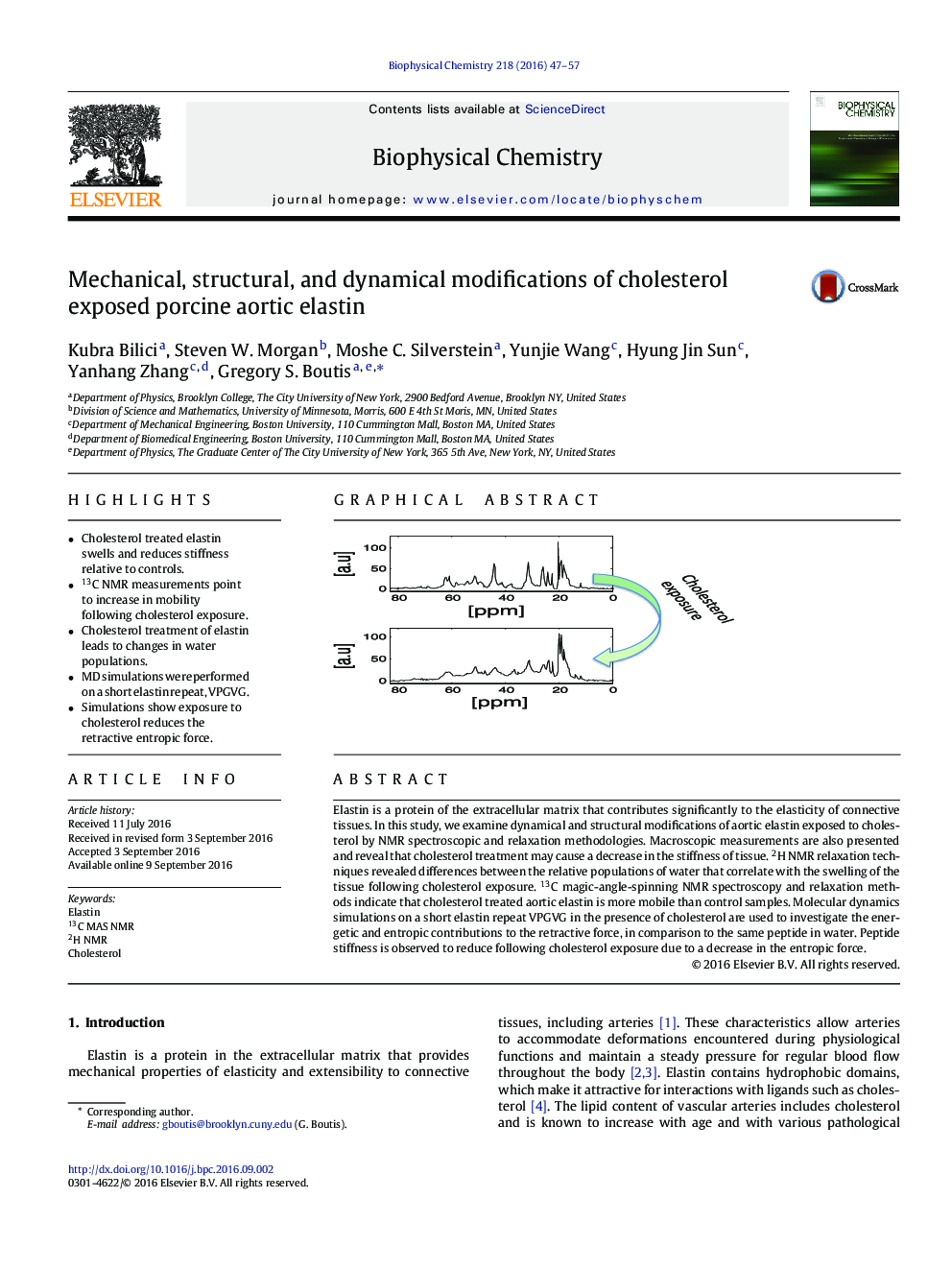| Article ID | Journal | Published Year | Pages | File Type |
|---|---|---|---|---|
| 5370716 | Biophysical Chemistry | 2016 | 11 Pages |
•Cholesterol treated elastin swells and reduces stiffness relative to controls.•13C NMR measurements point to increase in mobility following cholesterol exposure.•Cholesterol treatment of elastin leads to changes in water populations.•MD simulations were performed on a short elastin repeat, VPGVG.•Simulations show exposure to cholesterol reduces the retractive entropic force.
Elastin is a protein of the extracellular matrix that contributes significantly to the elasticity of connective tissues. In this study, we examine dynamical and structural modifications of aortic elastin exposed to cholesterol by NMR spectroscopic and relaxation methodologies. Macroscopic measurements are also presented and reveal that cholesterol treatment may cause a decrease in the stiffness of tissue. 2H NMR relaxation techniques revealed differences between the relative populations of water that correlate with the swelling of the tissue following cholesterol exposure. 13C magic-angle-spinning NMR spectroscopy and relaxation methods indicate that cholesterol treated aortic elastin is more mobile than control samples. Molecular dynamics simulations on a short elastin repeat VPGVG in the presence of cholesterol are used to investigate the energetic and entropic contributions to the retractive force, in comparison to the same peptide in water. Peptide stiffness is observed to reduce following cholesterol exposure due to a decrease in the entropic force.
Graphical AbstractFigure optionsDownload full-size imageDownload high-quality image (132 K)Download as PowerPoint slide
